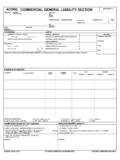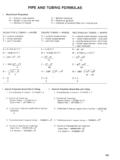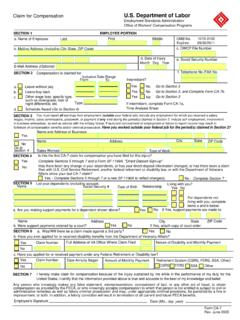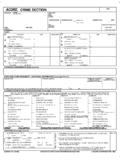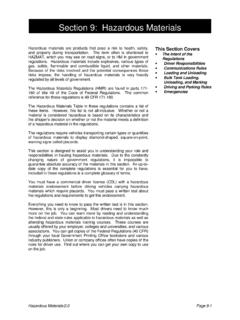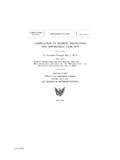Transcription of Dispelling Myths About Section 10 - chrisnowlan.com
1 Dispelling Myths About Section 10. Crimes (Sentencing Procedure) Act (NSW) 1999. _____. Criminal courts in New South Wales have discretion to dismiss a charge against an accused despite making a finding of guilt. 1 The author recently appeared for an offender on his third Drive Disqualified within three years and obtained the benefit of s10. I have since related this fact to various legal practitioners and been met with exclamations of disbelief. It seems that even legal practitioners are falling victim to the many Myths surrounding s10. This article is designed to dispel those Myths , provide some guidance for effective submissions and reduce the number of offenders being convicted unnecessarily in NSW. Let's begin by Dispelling a few of the Myths surrounding Section 10: You can't get s10 twice There is nothing in the legislation that precludes an accused person receiving the benefit of s10 twice even for the same offence - provided the criteria are met.
2 This myth arose because the Road Transport (General) Act disallows a second s10 discharge within five years but only for the specified offences. 2. You can't get s10 if you have a criminal record Again, there is nothing in the legislation that precludes an accused person receiving the benefit of s10, notwithstanding a criminal history, provided the criteria are met. In fact, the jeopardy principle means that an offender cannot receive additional punishment for previous offences. You can't get s10 after a not guilty plea and / or a contested hearing The Supreme Court has held that a plea of not guilty does not preclude an accused person receiving the benefit of The offender is punished for the offending conduct and may not be penalised for the manner in which the defence was conducted.
3 4 The offender is not entitled to a discount under s22 Crimes (Sentence Procedure) Act but that is a different matter. You can't get s10 for a serious offence Section 10 is available for all offences provided the facts meet the criteria. One offender in a police siege who claimed to have guns and bombs and held the police at bay for 24. hours received the benefit of s10 due to extenuating circumstances. 5 The police appealed and a conviction was later imposed - but the court acknowledge that a s10 discharge is available even for serious offences. 1 s10 Crimes (Sentencing Procedure) Act 1999, s19B Criminal Code Act (Cth) 1914. 2 s187(6) Road Transport (General) Act 2005. 3 Matheson v Director of Public Prosecutions (NSW) [2008] NSWSC 550.
4 4 Siganto v The Queen (1998) 194 CLR 656. 5 R v Paris (NSW) [2001] NSWCCA 83. How to approach the Submissions At the outset, every advocate should understand that no judicial officer wants to send someone to prison or impose a punitive sanction if there is any reasonable way to avoid it. Thus, it is the advocate's job to prepare the matter properly and show the Magistrate the path to a s10 discharge with reference to the Criteria in subsection (3). When reading the criteria you should bear in mind that none of them is determinative in itself. It is the combination that will result in the court exercising its discretion. Failing to meet one of the criteria does not preclude the exercise of the discretion. Age We all made foolish mistakes when they are young (often mistakes that no-one knows About but us).
5 An offender who is young and na ve is a suitable candidate for leniency under s10. Character Good character is shown by a clean record, character references and other achievements in life. The advocate should always mention that the defendant is employed and any academic or trade qualifications they hold. Antecedents Criminal antecedents indicates bad character, but the type of offence determines its relevance driving matters are not relevant to assault and vice versa. Counsel should always emphasis the length of time since the last offence of similar type to show that the client has matured and changed his ways. Health & Mental Condition Any health problems relied on should be substantiated by evidence from a medical practitioner.
6 This evidence must take the form of a report from the practitioner, not a mere medical certificate. Remember the burden is on you to show why the court should exercise its discretion. If you don't bring the case, you fail. The Trivial Nature of the Offence Never suggest that an offence is trivial! The law is the law and everyone must obey it. A. better submission is that the offence falls at the lower end of the scale and was unintentional. Also be sure to go through the list of aggravating factors and mitigating factors in s21 Crimes (Sentence Procedure) Act. Extenuating Circumstances Before entering a plea of guilty it is essential to negotiate a set of facts that are favourable to the offender. The offender can then plead any circumstances provided they do not traverse the set of agreed facts.
7 Rather than disentitling an offender to s10, a defended hearing may disclose extenuating circumstances in which the offence was committed to which the court should have regard in determining whether to apply the Section : (3)(c)'.6. 6 Matheson v DPP NSWSC 550 at [65]. Any Other Matter the Court Thinks Proper to Consider In addition to shame and embarrassment, a conviction can affect the employment and travel prospects of an offender. Convictions have to be disclosed in visa applications and during employment in regulated industries (including as a legal practitioner). Also, some driving offences incur automatic disqualification which can be disproportionate to the offence committed. * * *. The submission should conclude with a submission that it is inexpedient to convict in view of the fact that the offender: 1.
8 Has acknowledged his guilt, 2. Has cooperated with the authorities, 3. Has sought treatment if needed, and 4. Will not commit any more offences. Bonds It is normally prudent to suggest that a bond would be appropriate as this provides the court with a sense of security that the offender has not escaped scot free. Although the court can impose a bond under s10, it cannot impose any punitive conditions such as payment of a But here is the rub a discharge under s10(1)(a) is treated as a conviction that is immediately spent. Whereas, a discharge with a bond under s10(1(b) is treated as a conviction that only becomes spent when the bond ends. 8 This means it appear on the defendant's criminal history until then. For this reason, it is always best raise this concern with the court and to press for an outright dismissal under s10(1)(a).)
9 Example Cases Drive Disqualified Assault Age 23 years old = a young man 40 years old who made a foolish mistake Character Works to support mother and The offender has led a seven year old sister blameless life for 40 years Antecedents Driving offences for which he Never been to court before has just completed a three year disqualification 7 R v Ingrassia (1997) 41 NSWLR 447. 8 s8(4)(a) Criminal Records Act 1991. Circumstances Drove to work on his night off to Was twice assaulted by his assist his employer (not for his partner, used excessive force to own convenience) defend himself Triviality No dangerous driving, no No permanent injuries to the alcohol and no dishonesty victim Anything Else Cooperated fully with police, Cooperative with police and gave correct details and still lives with partner admitted disqualification Consequences Offender has great need for a A conviction could affect his driver licence and an automatic ability to travel and affect his two year disqualification would business be disproportionate RESULT s10 s10 with two year bond Sample Submissions Age The offender is a young man who has made a foolish mistake.
10 Alternatively, the offender has led a blameless life for many decades. Antecedents The offender has never been before the court before. The offender cherishes his unblemished record. Previous offending was many years ago. Circumstances The offence falls at the lower end of the scale The offender was not acting for his own benefit or convenience. Other persons were not placed at risk. There was no intention to defraud anyone. The offender was influenced by older people he looked up to. The offender suffers from mental health problems but is now being treated. Consequences A conviction will imperil the offender's employment or livelihood. The offender has substantial family commitments. The offender needs his licence for work.




